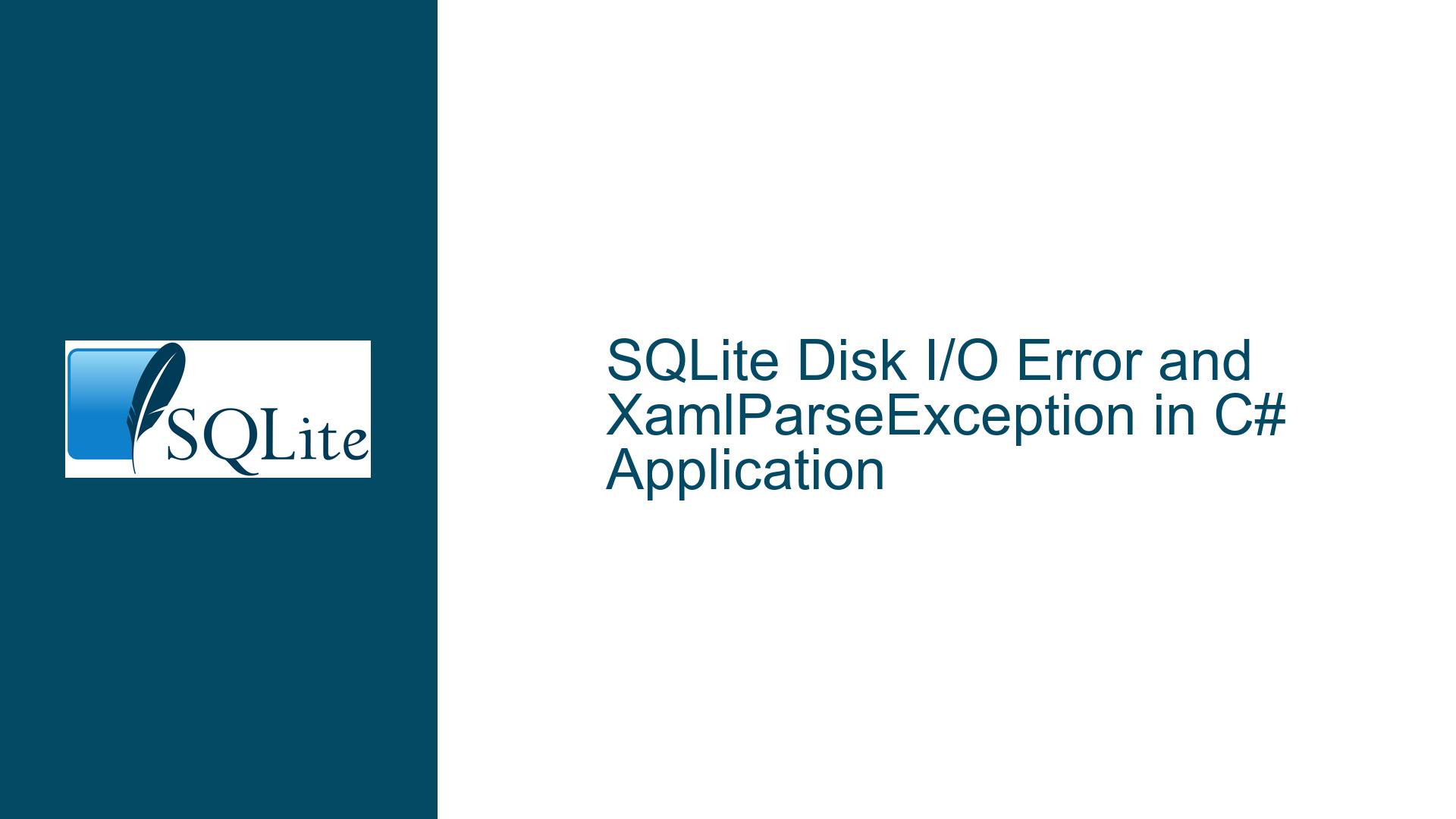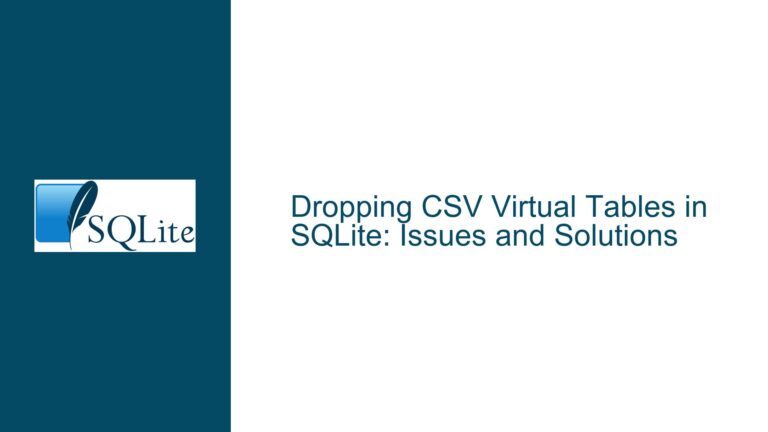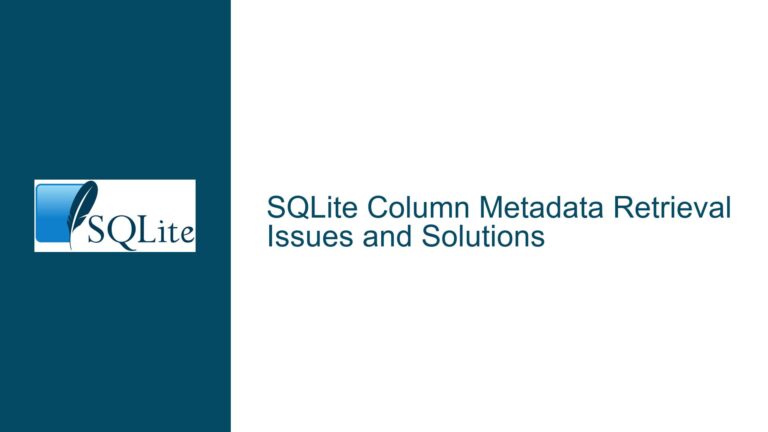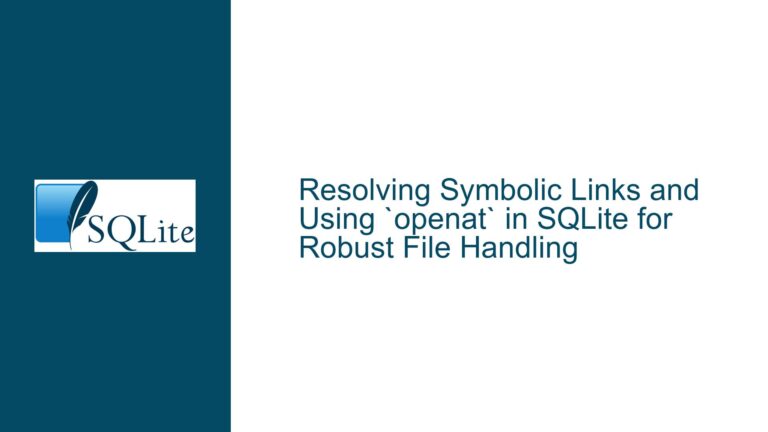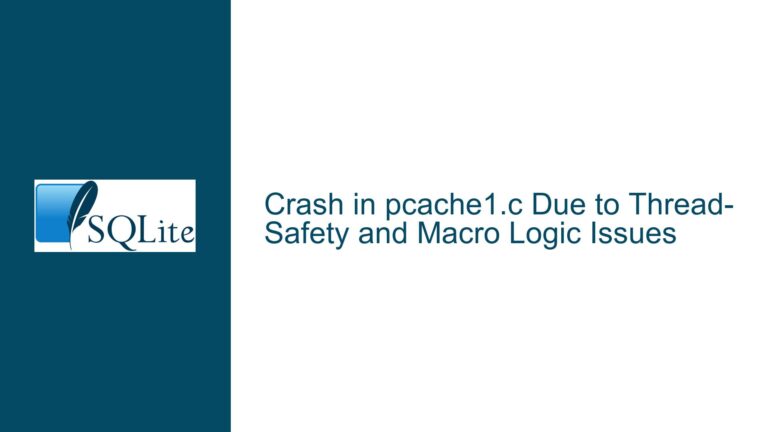SQLite Disk I/O Error and XamlParseException in C# Application
SQLite Disk I/O Error During Connection Open in C# Application
The core issue revolves around a System.Windows.Markup.XamlParseException that occurs when attempting to open an SQLite database connection in a C# application. The exception is triggered by a conn.Open(); call, which results in an unhandled exception. The error message indicates a disk I/O error, which suggests that the SQLite database engine is unable to perform read or write operations on the disk. This issue is particularly perplexing because it appeared suddenly and disappeared without any apparent changes to the code or environment.
The XamlParseException is a secondary symptom that arises because the SQLite connection failure propagates up the call stack, eventually causing the XAML parser to fail during the initialization of the application’s main window. The primary issue lies in the SQLite disk I/O error, which is the root cause of the problem. The disk I/O error could be due to a variety of reasons, including file system corruption, insufficient permissions, or issues with the SQLite database file itself.
The error message provided in the discussion is critical for diagnosing the issue. The SQLiteException: disk I/O error indicates that the SQLite engine encountered a problem while trying to access the database file. This could be due to the database file being locked by another process, the file being corrupted, or the application not having the necessary permissions to access the file. The XamlParseException is a consequence of this failure, as the application is unable to proceed with the database connection, leading to a failure in the XAML parsing process.
Interrupted Write Operations and File System Corruption Leading to Disk I/O Errors
The disk I/O error in SQLite can be attributed to several potential causes, each of which requires careful consideration. One of the most common causes is interrupted write operations. SQLite uses a journaling mechanism to ensure data integrity, and if a write operation is interrupted (e.g., due to a power failure or system crash), the database file or its journal file may become corrupted. This corruption can lead to disk I/O errors when the application attempts to access the database.
Another possible cause is file system corruption. If the file system on which the SQLite database resides becomes corrupted, the database file may become inaccessible or partially readable. This can result in disk I/O errors when the SQLite engine attempts to read or write to the database. File system corruption can occur due to hardware failures, improper system shutdowns, or software bugs.
Insufficient permissions can also lead to disk I/O errors. If the application does not have the necessary permissions to read or write to the database file, the SQLite engine will be unable to perform the required operations, resulting in a disk I/O error. This can happen if the application is running under a user account that does not have access to the database file or if the file permissions have been changed inadvertently.
Finally, the issue could be related to the SQLite database file itself. If the database file is damaged or corrupted, the SQLite engine may be unable to open it, leading to a disk I/O error. This can happen if the file is manually edited, if it is transferred incorrectly, or if it is affected by a bug in the SQLite library.
Implementing PRAGMA journal_mode and Database Backup Strategies
To troubleshoot and resolve the disk I/O error in SQLite, several steps can be taken. The first step is to ensure that the database file is not corrupted. This can be done by running the PRAGMA integrity_check; command, which will check the integrity of the database and report any issues. If the database is found to be corrupted, it may be necessary to restore it from a backup.
If the database file is not corrupted, the next step is to check the file system for errors. This can be done using the appropriate file system checking tools for the operating system. For example, on Windows, the chkdsk utility can be used to check and repair file system errors. On Linux, the fsck utility can be used for the same purpose.
Another important step is to ensure that the application has the necessary permissions to access the database file. This can be done by checking the file permissions and ensuring that the application is running under a user account that has access to the file. If the file permissions are incorrect, they should be adjusted accordingly.
To prevent future disk I/O errors, it is recommended to implement a robust backup strategy. This can include regular backups of the database file, as well as the use of the PRAGMA journal_mode command to enable journaling. Journaling ensures that changes to the database are written to a separate journal file before being applied to the main database file, which helps to prevent corruption in the event of an interrupted write operation.
The PRAGMA journal_mode command can be used to set the journaling mode to one of several options, including DELETE, TRUNCATE, PERSIST, and WAL. The WAL (Write-Ahead Logging) mode is particularly recommended for applications that require high reliability, as it provides better performance and reliability compared to the other modes. The WAL mode can be enabled by executing the following command:
PRAGMA journal_mode=WAL;
In addition to enabling journaling, it is also important to handle exceptions properly in the application code. The try-catch block used in the original code should be modified to catch the specific exceptions that may be thrown by the SQLite engine, including SQLiteException and XamlParseException. This will allow the application to handle these exceptions gracefully and provide meaningful error messages to the user.
Here is an example of how the try-catch block can be modified to handle the exceptions:
try {
conn.Open();
} catch (SQLiteException ex) {
Console.WriteLine("SQLite error: " + ex.Message);
// Handle the SQLite error
} catch (XamlParseException ex) {
Console.WriteLine("XAML parsing error: " + ex.Message);
// Handle the XAML parsing error
} catch (Exception ex) {
Console.WriteLine("Unexpected error: " + ex.Message);
// Handle any other unexpected errors
}
By implementing these troubleshooting steps and solutions, the disk I/O error in SQLite can be effectively resolved, and future occurrences can be prevented. It is also important to regularly monitor the application and database for any signs of issues, and to take proactive measures to ensure the reliability and integrity of the database.
Conclusion
The disk I/O error in SQLite is a complex issue that can be caused by a variety of factors, including interrupted write operations, file system corruption, insufficient permissions, and database file corruption. By carefully diagnosing the issue and implementing the appropriate troubleshooting steps, the error can be resolved, and the application can be made more robust and reliable. The use of journaling, proper exception handling, and regular backups are key strategies for preventing future occurrences of this issue.
